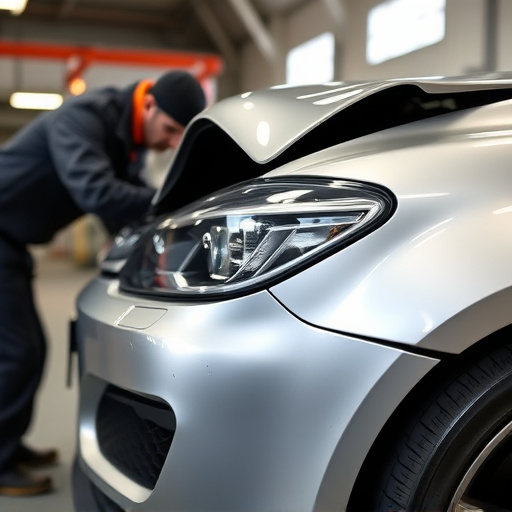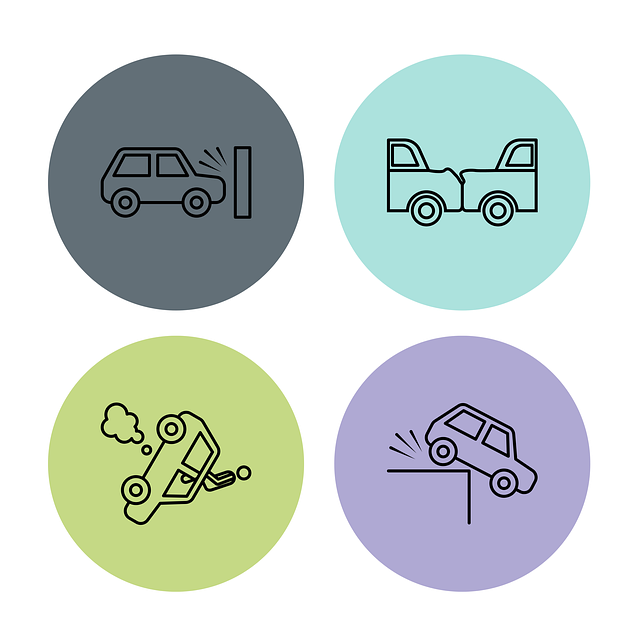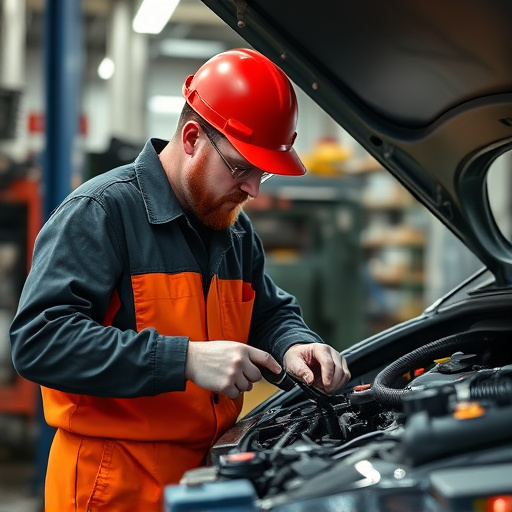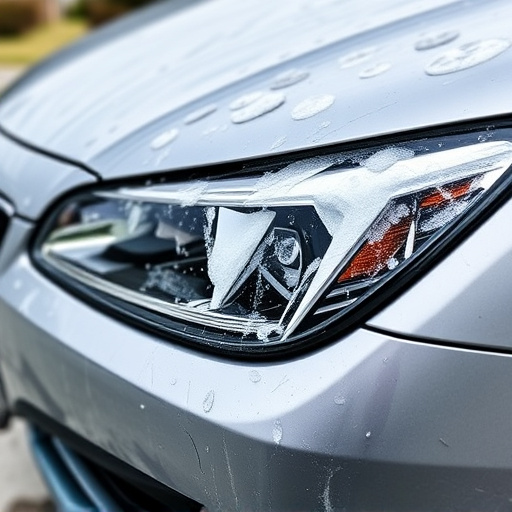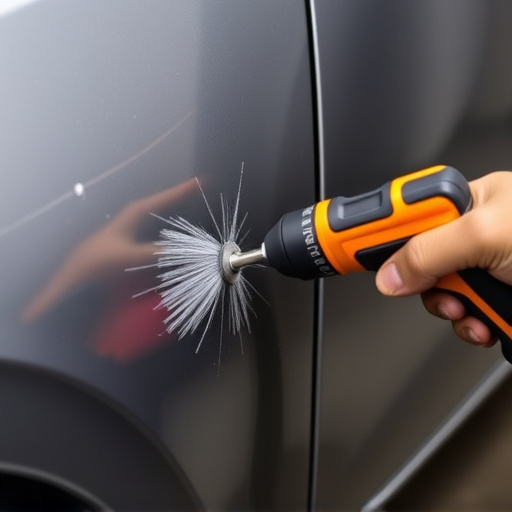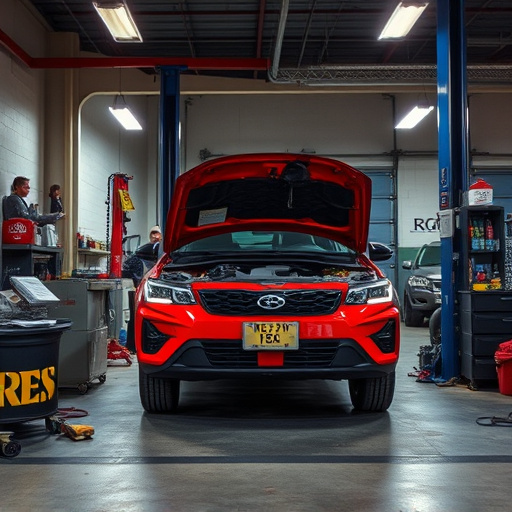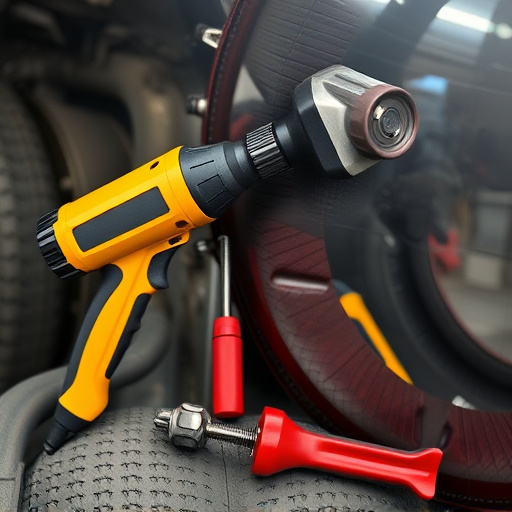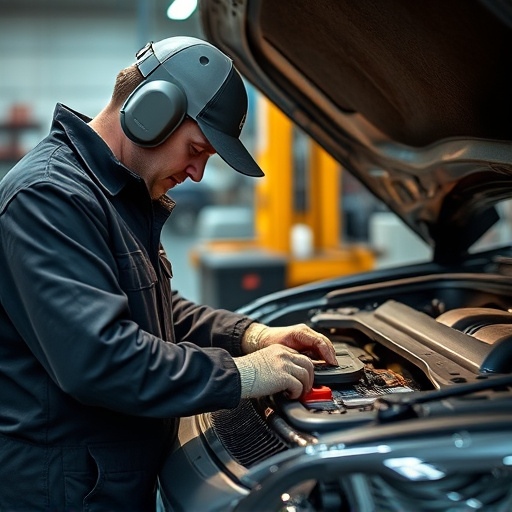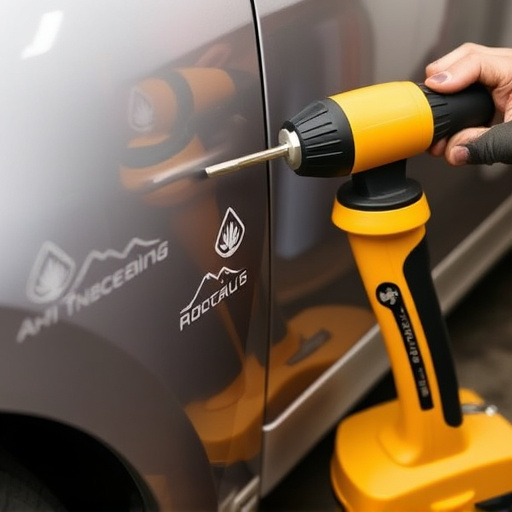Post-crash, assess your vehicle's internal battery health for cracks, bulges, unusual odors, leaks, or sounds. Prompt professional auto repair ensures safety and optimal performance, emphasizing battery replacement as crucial after a collision. Even minor accidents can cause hidden damage requiring immediate attention to prevent severe consequences. Regular maintenance practices prevent unexpected failures, ensuring reliable car performance post-crash.
After a collision, assessing your car’s internal battery damage is crucial for safety and reliability. This guide outlines essential steps to identify physical signs of harm and understand battery performance post-crash. Knowing when to replace your car’s battery is vital to prevent unexpected failures.
Recognize visible damage, test battery functionality, and learn the indicators that prompt a replacement—all key aspects in navigating battery maintenance after a crash, ensuring a smoother road to recovery for your vehicle.
- Recognize Physical Signs of Damage
- Check Battery Performance After Crash
- When to Replace Your Car's Battery
Recognize Physical Signs of Damage

After a collision, it’s crucial to assess your vehicle for potential internal battery damage. While external fender repairs and auto restoration may be visible, the battery, often overlooked, could be at risk. Look for physical signs of trauma or deformation around the battery compartment. Cracks, bulges, or any abnormal shapes in the casing suggest possible damage that requires immediate attention.
Remember, a battery replacement after a crash is not just about aesthetics; it’s about ensuring safety and optimal vehicle performance. If you notice any unusual odors, leaking fluids, or sounds coming from the battery area, these are clear indications that further inspection and possibly a battery replacement are needed. Don’t ignore these signs; seek professional auto repair near me to diagnose and address internal battery damage promptly for your safety and peace of mind.
Check Battery Performance After Crash
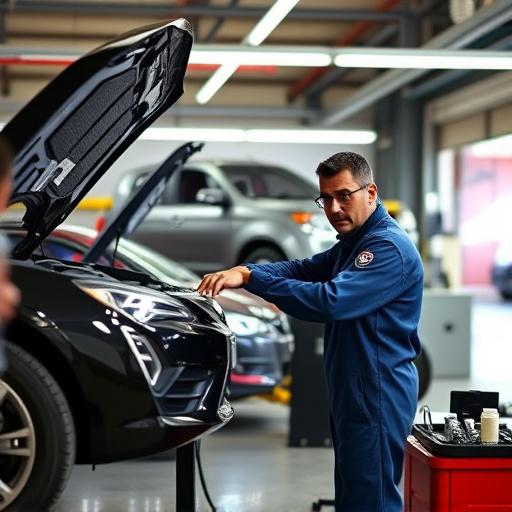
After a collision, one of the critical components to check for damage is the car’s battery. Even minor accidents can cause internal damage that may not be immediately apparent. The performance of your battery after a crash is a strong indicator of its health and whether it needs replacement. Look out for signs like difficulty in starting the vehicle or dim lighting when turning on accessories, as these could signal a damaged battery.
If you experience any such issues, it’s essential to have a professional assess the situation. Auto repair services offer diagnostic tests that can uncover internal damage, ensuring your safety and peace of mind. Remember, a well-maintained battery is crucial for your car’s overall performance, especially during challenging driving conditions. In the event of a crash, prioritizing battery replacement after crash scenarios can be an essential step in automotive restoration, keeping your vehicle reliable and roadworthy.
When to Replace Your Car's Battery

If your car has suffered significant damage in a collision, it’s crucial to assess all components, including the battery. Even if the initial inspection doesn’t reveal any visible signs of harm, a professional should check for internal damage. A skilled mechanic can determine if there are short circuits, corrosion buildup, or fluid leaks that could indicate a failing battery. These issues often become apparent after a crash due to the stress and changes in temperature experienced by the vehicle’s electrical system.
Knowing when to replace your car’s battery after a crash is essential for maintaining safety and reliability. While external dents and scratches might be visible and require car dent removal services or hail damage repair, internal battery issues can go unnoticed but have severe consequences. If the battery shows signs of swelling, leaking, or has a persistent smell of sulfur or burning, it should be replaced immediately. Regular battery maintenance includes checking for corrosion on terminals, ensuring tight connections, and topping up electrolyte levels (if applicable). A well-maintained battery is less likely to fail unexpectedly, especially in challenging conditions like severe weather or frequent short trips.
After a collision, it’s crucial to assess your car’s internal battery for damage. Recognizing physical signs and checking battery performance are essential steps. If you notice any abnormalities or if the battery isn’t holding charge, it may be time for a battery replacement after crash. Prioritizing this ensures your vehicle starts reliably and prevents further issues down the road.
